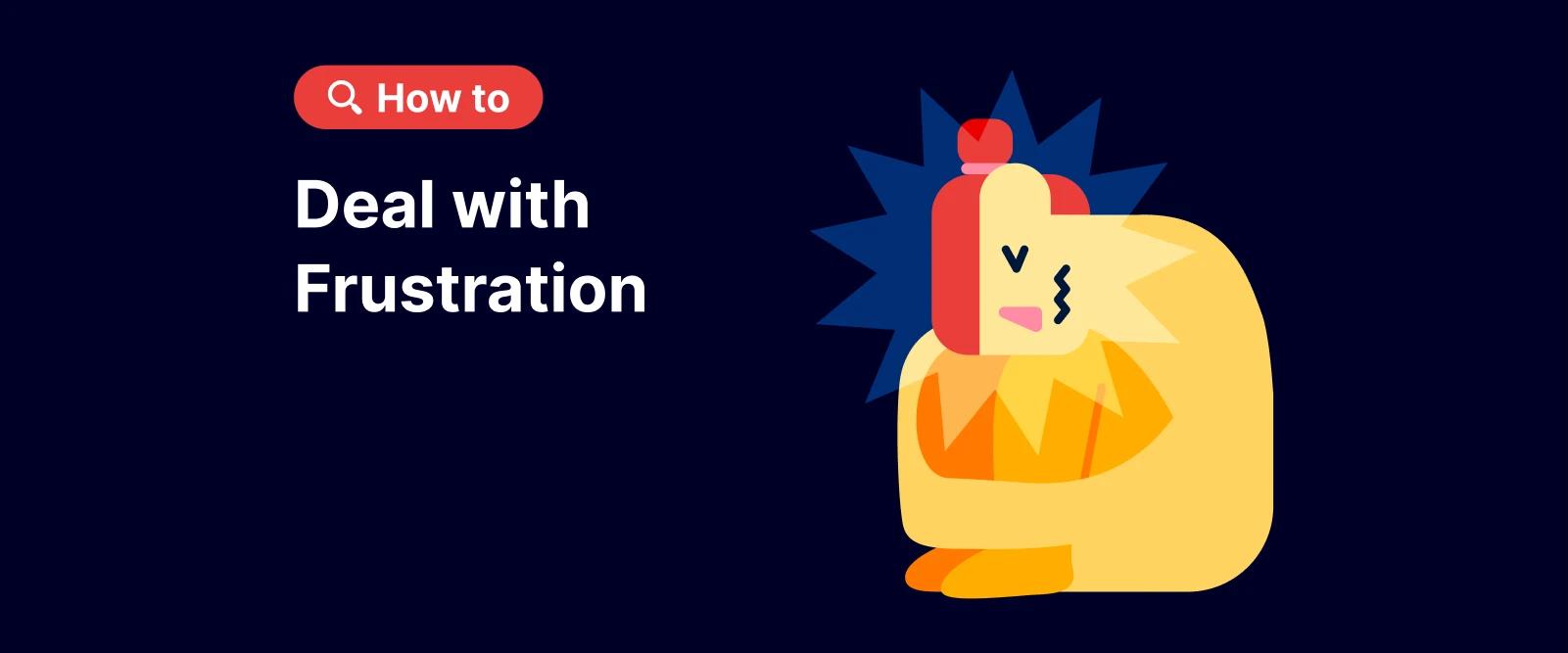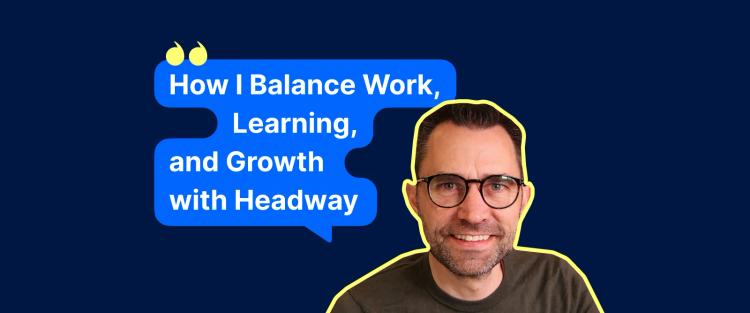Frustration often starts small, such as a missed email, a glitchy app, or a delayed reply. But it doesn't stay small for long. These feelings of frustration build up in your body and mind. They hijack your focus, drain your energy, and leave you feeling stuck. Frustration is the emotional response to being blocked from achieving a goal or expectation, often triggering tension, irritability, and a sense of helplessness.
Think back to a time when one tech issue or unexpected delay derailed your whole afternoon. That wasn't just a bad moment — it was frustration doing its quiet damage. You likely experienced frustration as a mental fog or physical tightness.
According to the American Institute of Stress, frustration can cut productivity by up to 40%. Instead of helping you power through, it ramps up reactivity, tenses your muscles, and clouds your thinking. You get impulsive. You lose clarity.
But frustration isn't a flaw. It's a signal — one that tells you something needs to change.
My name is Daniela, and I am a Trauma Educator and Somatic Practitioner specializing in nervous system healing. In this guide, I will share my secrets of how to deal with frustration before it burns you out, using tools from psychology, somatics, and emotional intelligence. Plus, we'll pull insights from top books like 'It Takes What It Takes,' 'The Body Keeps the Score,' and 'Burnout' to help you build real resilience.
7 quick strategies to handle frustration (before it handles you)
Frustration doesn't go away on its own, but you can train your nervous system to respond differently. These seven tools draw from psychology, somatic therapy, and emotional intelligence to help you overcome frustration without spiraling.
![]()
1. Breathe to break the stress loop
When your system is overwhelmed by pent-up stress, your body shifts into fight-or-flight mode — your heart races and your muscles tighten. Slow breathing and some simple breathing exercises help lower blood pressure and sends a signal of safety.
Try this:
Inhale for four, hold for four, exhale for four, hold again for four.
Do five rounds, and let yourself drop into the present moment — a place where overwhelm has less power.
2. Reframe what just happened
The story you tell yourself fuels your frustration or helps you calm down. Trevor Moawad calls this neutral thinking: not positive, not negative — just honest.
Try this:
Write down two neutral facts about the situation.
Then ask: What's one small thing I can do next?
3. Name it out loud
Labeling the emotion takes away its power. Neuroscience backs it up: naming a feeling calms your brain.
Say this:
"I feel frustrated and overwhelmed."
You don't have to fix it yet — just name it.
4. Check your boundaries
If the same situations keep triggering you, it may be time to set new limits — especially if your mental health or physical health is paying the price.
Ask yourself:
Did I speak up clearly about what I need?
What's one limit I can set next time?
5. Move your body
Stuck energy fuels frustration. However, physical movement helps you discharge it — fast. As Bessel van der Kolk says, "Our bodies carry the memory of every experience."
Try this:
Shake out your hands and arms.
Take a brisk walk or engage in another light physical activity.
Roll your shoulders.
6. Go neutral, not negative
Your brain catastrophizes to stay safe, but reframing your emotional reaction through neutral thinking can reduce the intensity of negative feelings and help you stay grounded.
Say this:
"This is hard, not impossible."
Check how your body feels when you say it.
7. Call a friend
Talking things through with a trusted friend helps you process emotions in positive ways — you don’t need to be alone with your frustration.
Say this:
"I'm not asking you to fix anything. I just need to talk this through."
Relational safety resets your system.
What is frustration, really?
Frustration is an emotional response when something blocks your goal. However, it's not just emotional — it's physical and behavioral too.
Emotionally, it can show up as agitation, impatience, or helpless anger.
Neurologically, it's tied to unmet expectations and stalled reward signals.
Behaviorally, it often looks like snapping, withdrawing, or procrastinating.
It's easy to judge yourself when frustration shows up, but here's the thing: frustration is functional. In small amounts, it helps you adapt, problem-solve, and push through obstacles. It only becomes harmful when you ignore it or let it pile up without release.
Understanding frustration for what it is — a natural stress response — can shift how you handle it. It's not a flaw. It's information. And it points to something that matters. Learn more about how frustration and emotion are tied to our behavioral patterns in our guide to human behavior.
“Why am I so frustrated all the time?”
Managing frustration takes one key skill: frustration tolerance — the ability to stay present with discomfort without shutting down or lashing out.
Low frustration tolerance often develops from:
Perfectionism or high expectations
All-or-nothing thinking
Past experiences that shaped emotional sensitivity
As Emily and Amelia Nagoski explain in 'Burnout':
"Frustration happens when our progress toward a goal feels more effortful than we expect it to be."

In other words, frustration spikes when reality doesn't match your mental blueprint. The more rigid your expectations, the harder it is to adjust.
Learning to regulate your emotions starts by noticing these patterns and giving yourself permission to pause, reassess, and stay grounded through the discomfort.
The identity layer: Who are you when you're frustrated?
Frustration often triggers an identity spiral: "Why can't I handle this better?" or "What's wrong with me?"
But frustration isn't a verdict — it's a snapshot of how your current needs, expectations, and limits clash. Instead of collapsing into shame, ask: What does this feeling want me to know about myself right now? Maybe it's showing you a value you forgot, a boundary that slipped, or a pace that's too fast.
Reframing frustration as self-inquiry — not self-judgment — keeps you curious instead of critical.
Frustration and the body: A deeper look
Frustration isn't just in your head — it shows up in your body first.
When your goals get blocked, your system reacts physically — tight muscles, shallow breath, racing thoughts. These are the short-term effects of frustration, but if ignored, they can chip away at your well-being over time.
But today's stressors — a late text, a frozen screen — still trigger that same ancient response. If you're carrying unresolved stress or trauma, even small frustrations can feel overwhelming.
As Bessel van der Kolk writes in The Body Keeps the Score:
"Trauma is not the story of something that happened back then. It's the current imprint of that pain, horror, and fear living inside people."
The key is to catch body signals early — clenched jaw, tight chest, shallow breath. Not to judge them, but to work with them.
These small physical shifts — a deep breath, a shoulder roll, a longer exhale — can stop frustration from spiraling into anger, anxiety, or shutdown.
Your body gives you early warning signs. Listening to them is how you take your power back.Learn more about how frustration and emotion are tied to our behavioral patterns in our guide to human behavior.
Quick body resets for frustration
When frustration builds up in the body, movement helps release it. These simple practices complete the stress cycle and stop tension from turning into burnout.
Progressive muscle relaxation:Tense one muscle group at a time for five seconds, then let go. Start with your feet and work upward. Notice the release.
Cross-body tapping:Tap opposite shoulders or knees in a steady rhythm. This practice grounds your awareness and calms your nervous system.
Gentle humming:Low humming stimulates the vagus nerve — a key player in your body's relaxation response. It's simple, subtle, and surprisingly effective.
You don't need a full workout or a long meditation. Regular self-care — even 5 minutes of movement or quiet — helps reduce long-term stress accumulation.
Frustration in relationships: The invisible divider
If you’re not communicating your feelings of frustration, they tend to seep out sideways — in sarcasm, withdrawal, or passive aggression. Open expression can clear the air and protect connection.
We often expect others to read our signals without expressing them clearly, but emotional pressure builds without communication.
Naming your experience — kindly and clearly — can turn tension into connection.
Try this script: "I'm feeling frustrated, and I want to figure out what's going on before it spills into something bigger."
Speaking openly with loved ones helps prevent miscommunication and builds emotional safety on both sides. Because sharing your emotional reality is a healthy way to build trust, not a burden.
Setting healthy boundaries can reduce friction — explore how to set boundaries with family for practical steps that apply to all relationships.
When frustration turns into burnout

Unchecked frustration doesn't just disappear — it wears you down. Over time, the causes of frustration — unclear boundaries, perfectionism, lack of recovery — accumulate and lead to emotional exhaustion.
Warning signs include:
Snapping over small things
Feeling numb or disconnected
Constant fatigue, even after rest
Dreading tasks you once enjoyed
Take Sarah, a graphic designer. She used to love her work. But after too many tight deadlines and endless revision requests, every small change felt like a personal attack. She wasn't just tired — she was burned out.
As 'Burnout' reminds us:
"Stress is not bad for you; being stuck is bad for you."
Burnout builds slowly. It often starts with frustration that gets ignored or minimized. Regular self-care — even 5 minutes of movement or quiet — helps reduce long-term stress accumulation. The solution isn't just rest — it's a combination of emotional expression, connection, and intentional self-care practices that signal safety to your nervous system.
When you spot the signs early, you can respond with compassion, not self-blame.
If you're noticing signs of chronic stress, check out common symptoms of burnout to catch them early.
Frustration and anger often travel together — explore anger management techniques to expand your emotional toolkit.
Self-check quiz: Are you managing frustration effectively?
Take this quick quiz to understand how well you handle frustration. Answer yes or no:
I notice physical signs of frustration early (tight chest, shallow breath, clenched jaw).
I use tools like breath, movement, or talking it out when I feel overwhelmed.
I can separate facts from emotions during setbacks.
I clearly communicate my limits with others.
I bounce back emotionally after tough days.
Mostly yes: You're building strong emotional resilience — keep going.Mostly no: Start with one or two practices from this guide. Small shifts make a big difference.
Final thought: Frustration is feedback, not failure

Frustration shows you care about growth, fairness, and connection. It's not a weakness; it's a message.
Frustration points to:
Skills you're ready to strengthen
Boundaries you need to reinforce
Needs that deserve attention
As Bessel van der Kolk says:
"Trauma robs you of the feeling that you are in charge of yourself, but healing restores choice."
Every time you pause instead of snap, breathe instead of shut down, or speak up instead of stay silent, you reclaim your agency. You don't just regain your calm. You realign with who you're becoming.
When needed, don’t hesitate to talk to a mental health professional, especially if frustration turns into shutdown or anxiety.
If you're feeling stuck: A quick recovery plan
Frustration can sneak up fast, but a few small actions can shift your state in minutes.
Pause: Take five deep belly breaths. Inhale through your nose. Exhale slowly. Reset your system.
Move: Shake out your arms. Stretch your neck. Take a brisk walk. Let your body release what it's holding.
Connect: Call or message someone who feels safe. Say, "I don't need solutions — just space to share."
These steps might feel small, but they create momentum. And that momentum builds trust in yourself.
Explore more and strengthen your emotional resilience with Headway app
Ready to dive deeper?
'It Takes What It Takes' — Discover the power of neutral thinking and how it helps you stay calm under pressure.
'The Body Keeps the Score' — Learn how trauma imprints on the body and what it takes to heal from the inside out.
'Burnout' — Understand the stress cycle — and how to complete it to prevent emotional exhaustion.
Want more evidence-based tools? Find summaries with DOIs and trusted sources inside the Headway app.
Frequently Asked Questions About Frustration
What are the 3 R's to handle frustration?
The 3 R's stand for Recognize, Reframe, and Respond.
Recognize the physical and emotional signs of frustration.
Reframe your thoughts by shifting from negative self-talk to neutral or constructive language.
Respond with intention, using tools like breathwork, boundary-setting, or movement to reset your system. This method builds emotional regulation and breaks the reactive cycle.
What are the 4 stages of frustration?
Frustration has four stages - trigger, tension, escalation, and reaction:
Trigger – An event blocks a goal or expectation.
Tension – Physical and emotional discomfort builds.
Escalation – The emotional intensity increases, often leading to irritability or impulsiveness.
Reaction – You respond through withdrawal, snapping, or other coping behaviors. Understanding these stages can help you pause before reacting.
What is RRR for anxiety?
RRR stands for Recognize, Reassure, and Redirect, a simple framework for managing anxiety.
Recognize the anxiety symptoms without judgment.
Reassure yourself that the feelings are temporary and manageable.
Redirect your focus using grounding techniques or small actions. While RRR is anxiety-specific, its principles can also ease frustration by calming the nervous system.
What are the five steps to dealing with frustration?
Here’s a five-step process to manage frustration effectively:
Pause and Breathe – Regulate your nervous system.
Name the Emotion – Label what you’re feeling to reduce intensity.
Reframe the Situation – Shift from blame to curiosity.
Choose a Small Action – Regain agency through momentum.
Release Physically – Use movement to discharge stuck energy. This sequence helps you regain clarity without suppressing your feelings.
What are the three roots of anger?
The most common roots of anger — often linked to frustration — are:
Hurt – Emotional pain from feeling dismissed or disrespected.
Fear – Anxiety over losing control, safety, or certainty.
Injustice – Perceived unfairness or boundary violations. Identifying the root helps you respond with insight rather than impulse.
Is frustration normal?
Yes. It's your brain and body signaling that something important is blocked.
Can frustration be a good thing?
Absolutely. It shows where change is needed, whether a boundary, a new strategy, or emotional release.
How do I know if frustration is masking sadness or fear?
If it feels overwhelming or isolating, there's often a deeper emotion underneath. Slowing down helps you feel what's really there.
How to deal with frustration?
Start with your body. Deep breathing, gentle movement, or a quick vent to someone safe works wonders.
Should I suppress frustration?
No, bottling it up makes it worse. Naming and releasing it keeps you emotionally healthy.













